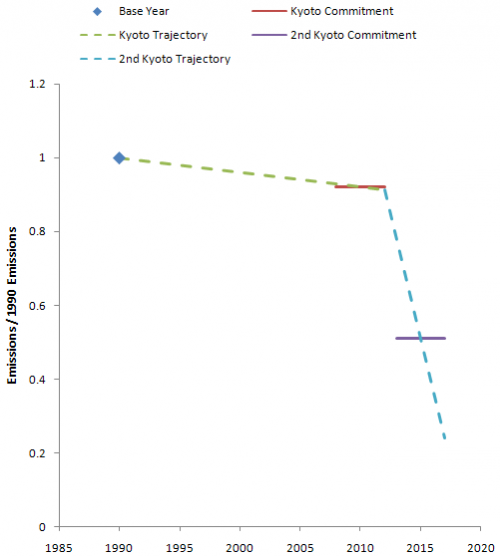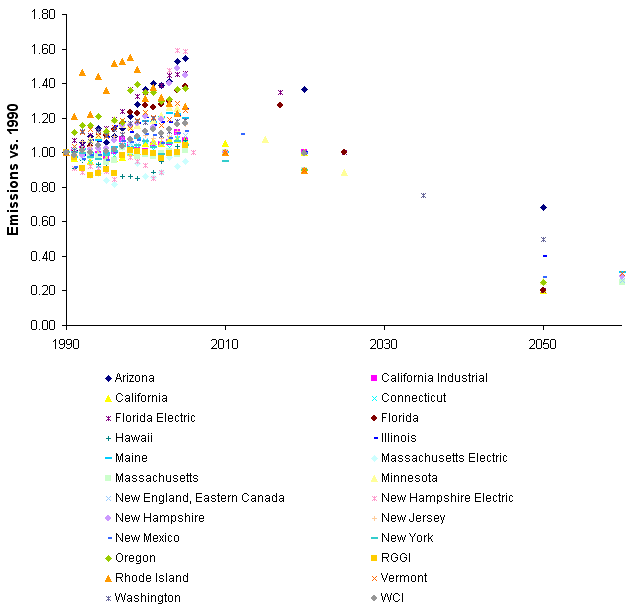The post-Copenhagen climate negotiations seem to be diverging, at least on the question of targets. Brackets, denoting disagreement, have if anything proliferated in the draft texts. The latest from Bonn:
AD HOC WORKING GROUP ON LONG-TERM COOPERATIVE ACTION UNDER THE CONVENTION
Eleventh session Bonn, 2–6 August 2010
Item 3 of the provisional agenda Preparation of an outcome to be presented to the Conference of the Parties for adoption at its sixteenth session to enable full, effective and sustained implementation of the Convention through long-term cooperative action now, up to and beyond 2012
Text to facilitate negotiations among Parties
…
4. Parties should collectively reduce global emissions by [50][85][95] per cent from 1990 levels by 2050 and should ensure that global emissions continue to decline thereafter. Developed country Parties as a group should reduce their greenhouse gas emissions by [[75-85][at least 80-95][more than 95] per cent from 1990 levels by 2050] [more than 100 per cent from 1990 levels by 2040].
…
18. These commitments are made with a view to reducing the aggregate greenhouse gas emissions of developed country Parties by [at least] [25–40] [in the order of 30] [40] [45] [50] [X* per cent from [1990] [or 2005] levels by [2017][2020] [and by [at least] [YY] per cent by 2050 from the [1990] [ZZ] level].
Hat tip: Travis Franck.



